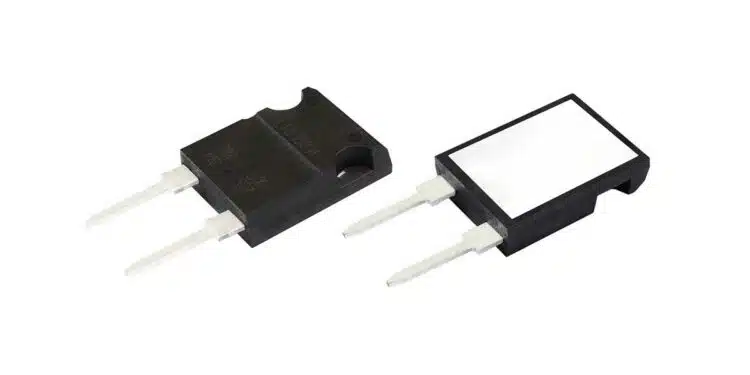Vishay Intertechnology, Inc. has extended its LTO series of thick film power resistors with a new AEC-Q200 qualified device that delivers higher pulse load absorption up to 75 J/0.1 s.
Offered in a clip-mount TO-247 package for direct mounting on a heatsink, the Vishay Sfernice LTO 150H offers high power dissipation of 150 W at a +45 °C case temperature.
The device released today features a unique design that provides 30 % higher energy absorption than existing LTO series devices for enhanced protection against short transient pulses.
The result is more stable operation in high stress environments, reducing the risk of failure and improving overall system reliability. The LTO 150H’s high power dissipation and low thermal resistance of 0.87 °C/W further enhance its ability to deliver consistent performance and safeguard sensitive components, while allowing fewer devices to be utilized – saving board space, simplifying layouts, and reducing overall solution costs.
The LTO 150H resistor offers high temperature operation to +175 °C, a broad range of resistance values from 1 W to 2.2 kW, and tolerances down to ± 2 %. The device will serve as the precharge or discharge resistor for controls, 48 V board nets, BMS, fuel cells, and on-board chargers for HEVs, EVs, and low speed electric vehicles; energy monitoring and metering systems; agricultural vehicles and farm equipment; industrial motor drives, welding equipment, and power tools; switches, routers, and optical network equipment; and weapons guidance systems.
The RoHS-compliant resistor offers a non-inductive design and is available with bended termination options.
Samples and production quantities of the LTO 150H are available now, with lead times of 10 weeks.
FEATURES
- 150 W at 45 °C case temperature heatsink mounted
- Direct mounting ceramic on heatsink
- Broad resistance range: 1 Ω to 2.2 kΩ
- Non inductive
- TO-247 package: compact and easy to mount
- Designed for clip mounting
- UL 94 V-0 material used – compliant with EN 45545-2
- Higher pulse absorption, up to 75 J/0.1 s
- Bended option available
- AEC-Q200 qualified































